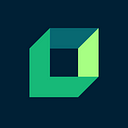Top 5 Free Medical Image Labeling Tool for Machine Learning in 2023
Healthcare and medical industries are being changed by machine learning, which enables specialists to diagnose injuries more accurately and quickly than ever before. In Data labeling in Nutshell, I mentioned some recommendations for your AI team to label data which is decisive factor in creating the accuracy of AI prediction. One of them is using data labeling tools to label data.

So, if you are an AI engineer, data scientist, or anyone who are on the road to find a free, accessible and user-friendly medical imaging tool to help save cost in building an AI model progress while still delivering good results. VinLab are so excited to introduce Top 5 Free Medical Image Annotation Tools to use in 2023
Let’s get into it!
3D slicer
Top 1 platform that we wanna introduce to you is 3D slicer.
This tool develops diverse features that you might receive some benefits such as
- Support of a wide range of DICOM information objects, such as 2D, 3D, 4D images, segmentation objects, registration objects, structured reports, and parametric maps,…
- Capabilities for 2D/3D/4D images supporting hundreds of segments per image using
- Many tools for manual and automatic registration of images, image sequences, and models.
- Over 150 extensions can be installed and used
Pros
- It’s a free, open-source software for visualization, processing, segmentation, registration and analysis of medical, ect
- Very complete software with a large number of tools (manual and semi-automatic) allowing the segmentation of medical images (DICOM format).
- The presence of additional tools for segmentation can facilitate this step.
- Data export is done in NRRD format, thus compatible with data analysis projects.
Cons
- Software is not solely dedicated to segmentation and may therefore require some time to adapt.
ITK-Snap
ITK-SNAP is a software application used to segment structures in 3D medical images.
Some of the core advantages you might receive when using this desktop app contain:
- Linked cursor for seamless 3D navigation
- Manual segmentation in three orthogonal planes at once
- A modern graphical user interface based on Qt
- Support for many different 3D image formats, including NIfTI and DICOM
- Support for concurrent, linked viewing, and segmentation of multiple images
- Support for color, multi-channel, and time-variant images
- 3D cut-plane tool for fast post-processing of segmentation results
- Extensive tutorial and video documentation
Pros
- This platform is free, open-source, and multi-platform for users.
- Complete and easy to use. The tools are designed specifically for medical data formats, making them specifically suitable for segmenting medical images.
- Easy setup. Users can directly load a new image/DICOM file or a new workspace.
Cons
- None, according to us. However, it does not support bounding box annotations.
Ango.ai
Ango Hub is the data labeling platform.
Free version allows users to invite up to 5 people and annotate 10k assets. Paid Cloud version allows for unlimited assets, with a charge for every 5 users. For on-premise installation contact us for pricing.
Pros
- Fit for any type and size of any project in multiple industries: from banking to healthcare, agriculture, automotive and more.
- Offers diverse types of annotation: DICOM, Image, Audio, Video, Document and Text and medical annotation available both as a service and on their annotation platform.
- Offer some tools for each type of labeling: Bounding Box, Cuboid, Relations, Polygon, Point, Segmentation for image annotation; Bounding Box, Nested Classification, Tables, Relations for Document annotations; etc.
Cons
- No AI assistance for labeling text or audio
- It does not look great on mobile
Md.ai
Md.ai is a software application that helps build the best medical AI datasets and algorithms. This platform was founded by Harvard/Duke/Columbia trained doctors to accelerate the application of AI in medicine with a particular focus on medical imaging.
These are some awesome features to help you jumpstart deep learning:
- Cloud storage of anonymized medical images
- Web-based annotation tools optimized for medical deep learning
- Real-time collaboration with your team
- Easy export of annotations, images, and labels for training
- URL links for assigning cases to team members
- Rapid prototyping of your medical deep learning project
Pros
- MD.ai is very complete, easy-to-use software with a large number of tools, and cloud storage supports medical image format (DICOM format).
Cons
- None, according to us.
MedSeg
MedSeg is a free segmentation tool with AI. Segmentation in radiology is crucial for many applications, such as volumetry, visualization, 3D printing, radiotherapy, and more.
Some features of great MedSeg platform
- Use our AI models or segment manually.
- Cloud-free solution
- Simply open in Google Chrome on a GPU
- GPU hardware acceleration through Canvas and WebGL
- Provide segmentation services for CT or MRI datasets
Pros
- Free medical internal and external database (Lateral Ventricles — 50MRI cases; Liver Segments — 50 cases,…)
- Allows free and simple volume segmentation of organs, tissue, and pathologies in radiological images. You can segment the images manually, or let our AI models do it for you.
- No installation needed, user-friendly and very fast. In addition, MedSeg provides 12 internal, some external medical databases and a forum for FAQ and feedback from users.
Cons
- None, according to us.
Reference
“Free software for annotating DICOM in deep learning” (Sarah Madeleine,2021)
Thanks for reading!
If you are finding information about machine learning, artificial intelligent or data in general or medical field. Follow us to acquire more useful knowledge about this 3 keywords.
Contact
Email: info@vinlab.io
Twitter: https://twitter.com/VinLab6
YouTube: https://www.youtube.com/@Vinlab-MedicalImageAnnotation
Open source project: https://github.com/vinbigdata-medical/vindr-lab
